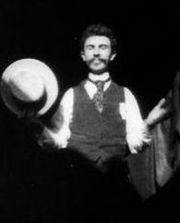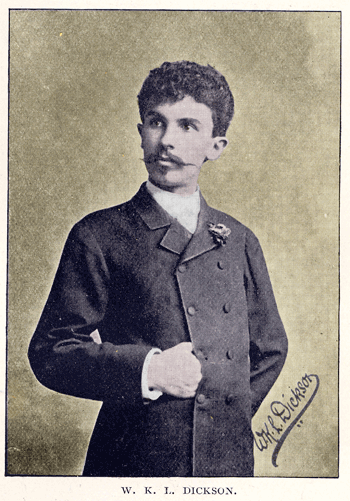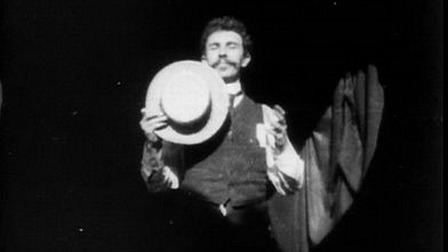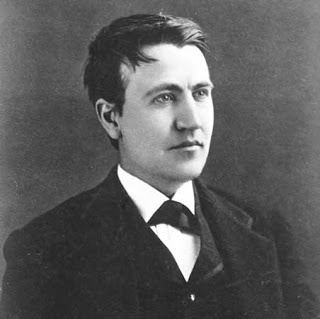Name William Dickson | ||
 | ||
Full Name William Kennedy Laurie Dickson Books History of the Kinetograph, Kinetoscope, & Kinetophonograph Parents James Waite Dickson, Elizabeth Kennedy-Laurie Dickson Movies The Dickson Experime, Dickson Greeting, Fred Ott's Sneeze, Monkeyshines, Carmencita Similar People Fred Ott, Thomas Edison, Herman Casler, Annabelle Moore, James J Corbett | ||
Organizations founded Biograph Company | ||
10 thomas edison films in 3 minutes the first films made in america
William Kennedy-Laurie Dickson (3 August 1860 – 28 September 1935) was a Scottish inventor who devised an early motion picture camera under the employment of Thomas Edison (post-dating the work of Louis Le Prince).
Contents
- 10 thomas edison films in 3 minutes the first films made in america
- Record of a sneeze dickson william kennedy laurie 1984 mpg
- Early life
- Inventor and film innovator
- Death
- Legacy
- Publications
- References

Record of a sneeze dickson william kennedy laurie 1984 mpg
Early life

William Kennedy Dickson was born on 3 August 1860 in Le Minihic-sur-Rance, Brittany, France. His mother was Elizabeth Kennedy-Laurie (1823?–1879) who may have been born in Virginia. His father was James Waite Dickson, a Scottish artist, astronomer and linguist. James claimed direct lineage from the painter William Hogarth, and from Judge John Waite, the man who sentenced King Charles I to death.
Inventor and film innovator

At age 19 in 1879, William Dickson wrote a letter to Thomas Edison seeking employment with the inventor. He was turned down. That same year Dickson, his mother, and two sisters moved from Britain to Virginia. In 1883 he was finally hired to work at Edison's laboratory in Menlo Park, New Jersey. In 1888, American inventor and entrepreneur Thomas Edison conceived of a device that would do "for the Eye what the phonograph does for the Ear". In October, Edison filed a preliminary claim, known as a caveat, with the United States Patent and Trademark Office; outlining his plans for the device. In March 1889, a second caveat was filed, in which the proposed motion picture device was given a name, the Kinetoscope. Dickson, then the Edison company's official photographer, was assigned to turn the concept into a reality.

William Dickson invented the first, practical, celluloid film, for this application. He slit a medium format roll film, which is 70 mm wide, and perforated the resultant 35 mm film, a standard format which is still in use to this day in cinema and photography.
William Dickson and his team, at the Edison lab, then worked on the development of the Kinetoscope for several years. The first working prototype was unveiled in May 1891 and the design of system was essentially finalised by the fall of 1892. The completed version of the Kinetoscope was officially unveiled at the Brooklyn Institute of Arts and Sciences on 9 May 1893. Not technically a projector system, it was a peep show machine showing a continuous loop of the film Dickson invented, lit by an Edison light source, viewed individually through the window of a cabinet housing its components. The Kinetoscope introduced the basic approach that would become the standard for all cinematic projection before the advent of video.
William Dickson and his team, created the illusion of movement, by conveying a strip of perforated film bearing sequential images, over a light source, with a high-speed shutter. They also, devised the Kinetograph, an innovative motion picture camera with rapid intermittent, or stop-and-go, film movement, to photograph movies for in-house experiments and, eventually, commercial Kinetoscope presentations.
William Dickson was the first person to make a film for the Pope, and at the time his camera was blessed by Pope Leo XIII.
In late 1894 or early 1895, William Dickson became an ad hoc advisor to the motion picture operation of the Latham brothers, Otway and Grey, and their father, Woodville, who ran one of the leading Kinetoscope exhibition companies. Seeking to develop a movie projector system, they hired former Edison employee Eugene Lauste, probably at Dickson's suggestion. In April 1895, Dickson left Edison's employ and joined the Latham outfit. Alongside Lauste, he helped devise what would become known as the Latham loop, allowing the photography and exhibition of much longer filmstrips than had previously been possible. The team of former Edison associates brought to fruition the Eidoloscope projector system, which would be used in the first commercial movie screening in world history on 20 May 1895. With the Lathams, Dickson was part of the group that formed the American Mutoscope and Biograph Company, before he returned permanently to work in the United Kingdom in 1897.
William Dickson left Edison's company and formed his own company, that produced the mutoscope, a form of hand cranked peep show movie machine. These machines produced moving images, by means of a revolving drum of card illustrations, similar in concept to flip-books, taken from an actual piece of film. They were often featured, at seaside locations, showing (usually) sequences of women undressing or acting as an artist's model. In Britain, they became known as "What the butler saw" machines, taking the name from one of the first and most famous softcore reels.
Death
His association with Biograph ended inexplicably in 1911. Dickson spent his last years quietly in the English countryside. He died on September 28, 1935, at the age of 75. He died without given credit to modern filmography.
Legacy
Dickson was the first to direct and likely star in a film with live recording. In 1894, he directed The Dickson Experimental Sound Film. A man (likely Dickson) played "The Song of the Cabin Boy" on the violin into a megaphone used for a partially off-camera phonograph. The film was the first to use the Kinetophone, the first device used in the earliest sound films.
